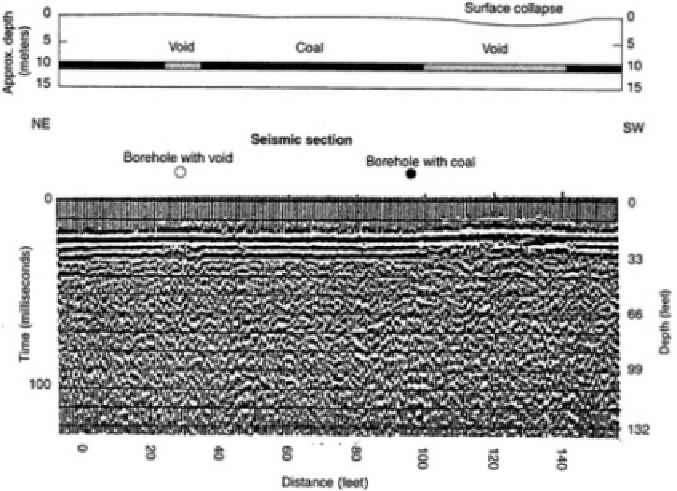Geology Reference
In-Depth Information
SIDEBAR 5.3 CASE STUDY: CAVITY DETECTION
The principle illustrated in the schematic diagram was used
successfully to detect abandoned mine workings in an industrial park at
Pittsburg, Kansas (Branham and Steeples, 1988). In this case, the coal
seam was about 3 feet thick at a depth of 33 feet. The first two coherent
blackened peaks on the seismic section represent seismic refractions
rather than reflections. The third and fourth blackened peaks represent
the coal reflection, which is absent where the seismic survey passed
directly above the abandoned mine workings. The geological cross
section above the seismic section shows the geological interpretation that
was supported by two boreholes, one of which hit a mine void and the
other, the coal seam.
Seismic detection of mine void at 33-foot depth. From Branham and
Steeples, 1988. Courtesy of Society for Mining, Metallurgy, and
Exploration, Inc.
cone of influence of the injected fluid; this could be used to discern
indirectly the coal outcrop barrier or seam's width. It should be noted that the
interpretation of these data is complicated because the coal remaining to form
the outcrop barrier or pillars would be under greater loading stress than the
unmined coal seam due to the increased overburden pressure distributed on a







Search WWH ::

Custom Search